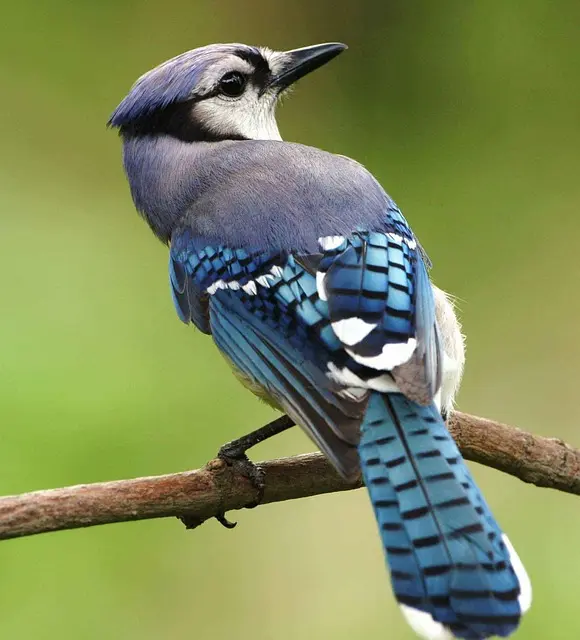by Amanda Rose Newton
During the winter months, birds add excitement and visual interest to the landscape. Florida happens to be one of the “birdiest” states in the USA, just behind Texas, and you can encourage them by creating a feathered paradise in your backyard.

Providing food for birds is just one piece of what it takes to increase their visit frequency to your landscape, as shelter and water also factor in. The best part about designing for the birds is that in reality, you are improving your space for all Florida wildlife– including us!
To brush up on your bird biology, remember that birds do not have a great (if any) sense of smell and are visually attracted to bright colors. Any plant offering a tasty snack in the form of a berry is an added bonus.
Bird Friendly Plants
Since plants are the best part of the yard to shop for, we have broken down the list into shrubs, nectar plants, and seed-producing plants. To bring all the birds to your yard, try to offer a mix of the three as space allows. You will notice many of the plants we suggest happen to be natives. Although invasive species like Brazilian pepper, nandina, asparagus fern, and Surinam cherry produce berries, birds are able to continue to spread these easily to unintended places like local parks. Keep that in mind when making your selections.
Nectar Producing Plants
If you happen to have a fondness for hummingbirds, the following list will keep your yard on their frequent flyer list!
Coral Honeysuckle (Lonicera semperviens)- A hummingbird favorite, this native attracts all the birds, butterflies, and bugs on your list!
Trumpet Creeper (Campsis radicans)
Cardinal Flower (Lobelia cardinalis)
Crossvine (Bignonia capreolata)
Beardtounge (Penstemon sp.)
Passionflower (Passiflora suberosa)
Scarlet Salvia (Salvia splendens)
Bird-Friendly Shrubs (and Trees)!
Most of these provide us with additional services, whether fruit or beauty, in addition to bringing in the birds.
Beautyberry (Callicarpa Americana)- As a bonus, this one is a natural mosquito repellent!
Blueberry (Vaccinium sp.)- In addition to the commercially available species, Florida boasts several of their own!
Chicksaw Plum (Prunus angustifolia)
Elderberry (Sambucus sp.)
Firebush (Hamelia patens)- A must for any butterfly lover!
Golden Dewdrop (Duranta erecta)
Hollies (ALL the hollies!) (Ilex sp)
Sabal Palm (Sabal palmetto)- Our state “tree”!
PawPaw (Asimina triloba)
Seagrape (Coccoloba uvifera)
Simpson’s Stopper (Myrcianthes fragens)
Viburnum (Viburnum sp.)
Mullberry (Morus alba)
Wax Myrtle (Myrica cerifera)
Wild Coffee (Psychotria sp.)- Also a favorite of bees!
Bird Food Plants
Letting your garden go to seed is not only an excuse to be a lazy gardener; it also promotes wildlife and ups the bird activity in your yard. The following are favorites of some of the most beloved songbirds, including warblers, sparrows, finches, nuthatches, and chickadees. Some of the bigger guys like mockingbirds (our state bird) and cardinals also will take part in seed feasting.
Coneflowers (Echinacea purpurea)
Black-eyed Susans (Rudabeckia sp.)
Ironweed (Vernonia sp.)
Beggarticks (Bidens alba)
Sunflowers (Helianthus sp.)
Sage (Salvia sp.) Also a great nectar plant!
Mistflower (Conoclinium coelestinum)
Thistle (Cirsium sp.)
Coreopsis or Tickseed (Coreopsis sp.) Our state wildflower!
Bug Out! Birds Need More than Just Plants
Birds require more than just plant material to stay happily fed. Most species feed their growing chicks caterpillars and other insects. If you are especially interested in having birds take up residence in your yard long term, you are going to need to set up rent signs for the bugs, too. Luckily, many of the plants delicious to insects happen to be delicious to our eyes, too.
Dotted Horsemint (Monarda puncta)- A native with a Dr. Seuss appeal!
Blazing Star (Litaris sp.)- A beautiful plant that adds height
Goldenrod (Solidago sp.)- The hardest working plant in the garden, this one will bloom when everything else has closed up shop for the season.
Stokes’ aster (Stokesia laevis)- One of the prettiest Florida natives
Again, you will notice many natives on this list and that is intentional, as research suggests native plants do a better job of fostering native insects.
Bird Housing
Lastly, make sure you provide adequate shelter for birds to support them long-term. It doesn’t need to be in the form of a cute birdhouse (although those are great, too). Simply leaving brush piles and snags (dead trees or shrubs) can provide shelter. Snags left in yards also provide a great perch for raptors like hawks, which hold an important role in our ecosystem. Just be sure to remove any that pose a threat to homes or people if they were to fall. Simply adding trees and shrubs will already be more than enough shelter for visiting birds and longtime renters.


